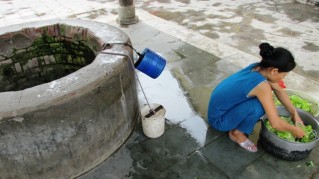Here in the Ozarks, we are expanding our growing areas, relearning old-time skills, acquiring hand tools and building human-powered devices while we still can. But, preparing for radioactive rain? We hadn’t thought of that.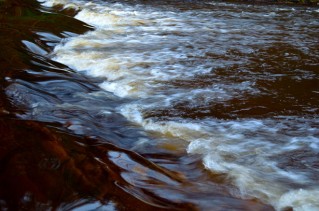
While global warming seemed a fairytale to many 25 years ago, I boycotted Styrofoam, aerosol sprays, pesticides, paper towels and household chemicals after reading “The End of Nature” by Bill McKibben and Al Gore’s “Earth in the Balance.” Just one little human, I hoped to help Earth live a few more centuries.
I skimmed over forewarnings of nuclear mishaps, atomic bombs and radiation contamination though. I thought if it ever came to that, life on this planet would cease, so what was the point?
But now that an incalculable mess of radioactive elements is rolling across the Pacific Ocean, I want to know more. It’s real, it’s lethal and it isn’t going to just disappear.
Australian environmentalist Dr. Helen Caldicott said in a recent news article she knew “the world would never be the same again” after the March 2011 tsunami crashed into the Fukushima, Japan nuclear complex.
“No nuclear reactor can withstand being drowned in a massive wave of water without catastrophic consequences,” she said. Caldicott has opposed nuclear power, depleted uranium munitions, nuclear weapons proliferation and war for decades. Her books include “Nuclear Madness” (1978) and “Nuclear Power is not the Answer” (2006).
She warned us this could happen.
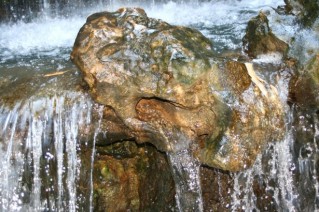 Remember how horrifying acid rain seemed 30 years ago? On its way to earth, rain picked up sulfur dioxide and nitrogen oxides from industrial emissions, killing 300-year-old cedars in the Northeast. Dead fish floated in lakes. Birds fell from the sky. In Europe, poisoned rainfall eroded noses from marble statues.
Remember how horrifying acid rain seemed 30 years ago? On its way to earth, rain picked up sulfur dioxide and nitrogen oxides from industrial emissions, killing 300-year-old cedars in the Northeast. Dead fish floated in lakes. Birds fell from the sky. In Europe, poisoned rainfall eroded noses from marble statues.
Instead of nourishing and revitalizing life, rain became something to fear.
We don’t hear much about acid rain anymore. Perhaps it’s because we actually made headway in cleaning up our act, reducing U.S. emissions by as much as 67 percent from 1995 to 2011, according to a Sept. 12 Mother Jones.com article by Henry Grabar.
Now, rain is scary again – more terrifying than ever.
The radiation contaminating the Pacific is not a West Coast problem or economic crisis or even a temporary one. Our globe is a closed system. All the water here now is all that has ever been here. The water I washed our clothes in today passed through a pterodactyl 200 million years ago.
This isn’t a new concept. I learned that in grade school in the 1960s. Water evaporates from our puddles, ponds and oceans, accumulates in our atmosphere and falls again to the earth, replenishing rain barrels, rivers and aquifers. It goes up, it comes down, and on and on it goes.
Three-fourths of the Earth is covered with water, but less than 1 percent of that is accessible, fresh water. Two percent is frozen and most of the rest is salty. Picture this – If all of the Earth’s water fit into a gallon jug, only one tablespoon of that is water we can drink.
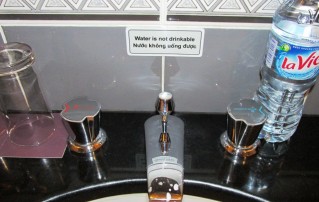 While in Vietnam, I didn’t even have to ask whether the water was safe to drink. The answer was firmly mounted above the sink in my luxurious hotel room:
While in Vietnam, I didn’t even have to ask whether the water was safe to drink. The answer was firmly mounted above the sink in my luxurious hotel room:
In a Vietnamese market, I watched as a woman lowered a plastic one-gallon container on a rope to retrieve water to rinse lettuce to sell. Shallow, open wells will eventually no longer be safe to use.
The United States has one of the safest drinking water systems in the world, according to a 2013 report by the Centers for Disease Control and Prevention. Yet, Americans dump 1 billion tons of chemical pesticides on our land annually, according to a 2012 Environmental Protection Agency report. We pour costly poisons on our lawns and then buy outrageously expensive bottled water to drink.
As disturbing as that fact is, the news of 270,000 tons of contaminated water coming from Japan in the past 30 months (and still being released at 300 tons per day) is cataclysmically more alarming.
As we all hear more about radioactive elements and inert noble gases released into our air and water, people have begun calling to ask if radioactive particles can be filtered naturally from water. We sell well buckets and manual pumps. I can only imagine the calls water filter suppliers are receiving.
“There is no safe amount of radiation exposure. Every little bit is added to our burden,” Highwater Filters owner Hilary Ohm said when I called to ask about radiation filters. “Any reduction will help.”
Our unsophisticated human senses cannot detect radiation around us. It cannot be felt, seen, tasted or heard, but it is there, accumulating in our bodies until it eventually makes us ill, generally in the form of cancer.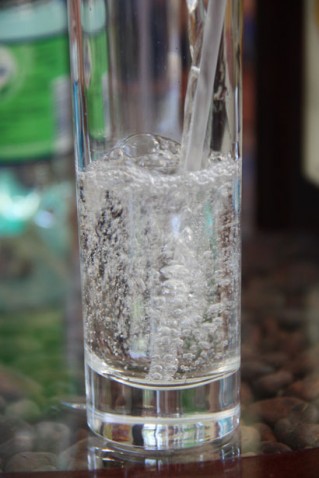
Ohm, too, has protested against the use of nuclear power since the 1970s and became friends with Caldicott after hearing her speech “If You Love this Planet,” the recording of which was censored by the U.S. Justice Department as foreign propaganda.
“We have to make nukes and fossil fuels things of the past,” Ohm said. “More people need to be aware of what is happening. At least we can pressure the government to shut down our nuclear power plants.”
Ohm cited as an example the nearly 40-year-old nuclear reactor at Indian Point, New York. The facilities are only designed with a 40-year lifespan, and appear poised for a 20-year permit extension. she said.
“If that one has a meltdown, it has the potential to affect millions of people,” Ohm said. Other aged reactors are spread across the country and world.
Admittedly, the outlook is grim. Still, as survivalists, we refuse to just give up or pretend it isn’t happening, although it will require preparations we hadn’t anticipated.
We have known since we were youngsters that eventually mankind would strip the world of its resources (some say by 2050) and lifestyles must change. We actually hoped we would live long enough to see the transformation and looked forward to a simpler way of life – one without cars, chaos, oil and electricity.
No longer would economic slavery claim 12 hours of our day, leaving little for family or relaxation, only enough to sleep until the cycle begins again. Ironically, the pursuit of luxuries that only abundant electricity could provide is what led us to this calamity of worldwide proportion.
In time, radiation decays – the cities of Hiroshima and Nagasaki have been rebuilt. Yet, 200 dangerous elements are being released now, much more than from those two horrendous bombs ― including cesium, tritium and iodine 131 and possibly plutonium, which can remain radioactive anywhere from a few seconds to tens of thousands of years.
Some beaches have reopened in Japan, although attracting only a fraction of tourists as in pre-tsunami years. Fishermen are at work again, bringing in smaller loads and being paid drastically less than before. Some Japanese fishermen, according to the Japan Times, have taken to trolling for tsunami debris (bicycles, appliances and building materials) instead of tuna.
There are things we can do, too, as we adjust to our altered environment. The following information is taken from the SAS Survival Handbook by John Wiseman and deals with radiation contamination after a nuclear blast, although many of the same principles apply to the current radiation threat:
Food – Root vegetables with edible tubers growing underground are safest, such as carrots, potatoes and turnips. Wash them well and peel before cooking. Smooth-skinned fruits and vegetables are next safest. Plants with crinkly foliage are the hardest to decontaminate and should be avoided. Animals that live underground (rabbits, badgers, voles) have less exposure to radiation than those that live on the surface. Wear gloves when handling carcasses and leave at least 1/8” of meat on the bone as most radiation is retained in the skeleton. Muscle and fat are the safest part of the meat. Discard all internal organs. Fish and aquatic animals will have a higher contamination than land animals from the same area. Birds will be particularly heavily contaminated and should not be eaten.
Water – Avoid water from lakes, pools, ponds and other static surface water. Filter all water and boil it before drinking. The following sources are the least contaminated (in order of least risk):
- Underground wells and springs
- Water in underground pipes and containers
- Snow taken from deep below the surface
- Fast-flowing rivers
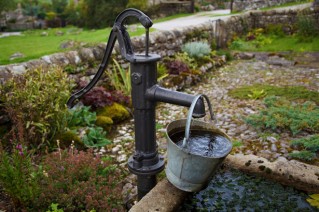 Again, the above recommendations concern radioactive fallout after a nuclear explosion. However, time and distance from the source are still the best defense. Now it may be more important than ever to have a drilled well for your drinking water and a reliable way to access that water.
Again, the above recommendations concern radioactive fallout after a nuclear explosion. However, time and distance from the source are still the best defense. Now it may be more important than ever to have a drilled well for your drinking water and a reliable way to access that water.
Filters – TRAP (Total Radioisotope Aqua Purifier) filters, which use ion exchange and zeolite to remove radioactive particles from drinking water, are effective, especially when combined with reverse osmosis methods. Distilling and reverse osmosis both are reported to be effective.
Obviously, these recommendations only help humans, the ones who created these enormous problems in the first place.
As of January this year, there are 437 nuclear reactors worldwide, according to the European Nuclear Society. How many are on fault lines or coasts? Can they withstand tsunami, earthquakes, hurricanes and other disasters? Just how many Fukushima disasters will it take to eradicate all life? Those who protested the building of nuclear power plants in the 1960s and 70s knew we had something to fear, didn’t they?
I realize it is too late for such questions now, but shouldn’t we have been more careful with our one tablespoon of water? Or did we simply plan to post signs by our sinks to warn us “Water is not drinkable?”
Or, just maybe, we can learn from our experience with acid rain of 40 years ago. We don’t have to live like this.
© 2013 Well WaterBoy Products LLC ♦ WaterBuck Pump™ ♦ Pedal Powered PTO™

